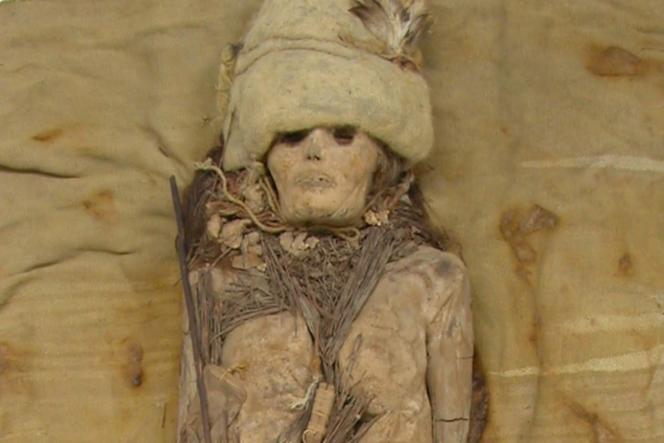


The history of cheese has undoubtedly taken a great leap forward. A Chinese team has succeeded in extracting DNA from the oldest residues of dairy products ever discovered. The solid samples, just a few centimeters wide, exhumed from a 3,500-year-old tomb in a Xinjiang cemetery, provide essential information, both on the spread of the dietary practice and on the evolution of the composition of kefir grains, used for fermentation in this instance. Published in the journal Cell on September 25, the results promise to be widely commented on by paleontologists and food specialists alike.
Located to the east of the Taklamakan desert in the Uyghur Autonomous Region, the Xiaohe cemetery is a unique site. Discovered in the early 20th century, it came into its own scientifically in the early 21st century when Chinese archaeologists unearthed around 300 Bronze Age burials, dating from 3,300 to 3,600 years ago, of which 167 have been excavated. In most of them, researchers found mummified bodies, but also thousands of objects, plant extracts and what looked like fragile pebbles. Placed around the neck of the deceased, like the stones of a necklace, or along the body, they piqued the curiosity of all scientists.
In 2014, the first Chinese team then succeeded in making proteins talk – it involves dairy products. And not just any milk products. The combined presence of known bacteria and yeast offers the signature of kefir, a fermentation method that has been used for millennia to prepare milk and fruit drinks, among others.
Nevertheless, proteins only offer fragmentary information. To read cheese residues, you need DNA. Extracting this genetic code from such ancient samples, contaminated for thousands of years by other micro-organisms, seems impossible. But Qiaomei Fu, head of the Ancient DNA Laboratory at the Institute of Vertebrate Paleontology and Paleoanthropology of the Chinese Academy of Sciences, and his team have succeeded.
"A real technological feat," said biophysicist Christophe Lavelle, a researcher at the Muséum National d'Histoire Naturelle (National Museum of Natural History) in Paris, whose laboratory is pursuing a project on kefir and its history. The latter requires the development of special tools, a kind of specialized probe capable of unearthing the genetic code of tiny needles – bacteria, archaea, yeast, etc. – from the haystack of these largely altered lactic aggregates.
Trained at the Max-Planck Institute in Leipzig (Germany), in the laboratory of the pope of ancient DNA, the Nobel Prize-winning physicist Svante Paabo, then at Harvard University, Fu has the know-how and the resources of Chinese research. It has to be said that getting these samples to talk is a major scientific and historical challenge. Traces of over 7,000 years of cheese-making were indeed found in the Caucasus in 2018, but they remain archaeological, indirect, and in this case, vessels pierced with holes to filter the milk. Milk lipid residues have also been found on pottery shards in Poland, again nearly seven millennia old. But there was no physical evidence, let alone biological samples for analysis.
You have 44.86% of this article left to read. The rest is for subscribers only.
